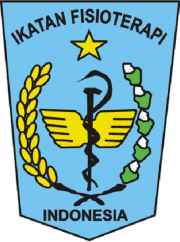Physiotherapy Management in Cases of Cerebral Palsy Flaccid Ec Microcephaly
Orlens Rambu Jeara(1*), Adnan Faris Naufal(2), Rina Kusuma Wardani(3)(1) Universitas Muhamadiyah Surakarta
(2) Universitas Muhamadiyah Surakarta
(3)
(*) Corresponding Author
Abstract
Cerebral Palsy is a disorder of the development of body movement and posture, resulting in movement limitations that can occur starting from the fetus or baby accompanied by disorders of the musculoskeletal system, sensation, perception, awareness, communication, and behavior. the study used a case report study conducted at the Oemah Physiotherapy Clinic in Solo. The cause of cerebral palsy begins during the prenatal period which is caused by infection, anoxia, toxic, genetics, congenital malformations of the brain, the neonatal period occurs due to anoxia, traumatic, and postnatally caused by trauma, infection and toxic. Physiotherapy helps in optimizing children's active movements by using interventions in the form of myofacial release, patterning, and exercise. After being treated for 4 times T1-T4 there was no increase or change in muscle strength by measuring XOTR muscle strength and motor function in children using gross motor function measure (GMFM) and gross motor function classification system (GMFCS) measurements.
Keywords: Cerebral Palsy, XOTR, GMFM, GMFCS
Full Text:
PDFReferences
Ahmed, W. S., Gharib, R. M., Salah El-Din, H. M., & El-Talawy, H. A. (2021). Effect of pelvic girdle stability training on functional sitting control in children with hypotonic cerebral palsy. International Research Journal of Medicine and Medical Sciences, 9(1),24–33. https://doi.org/10.30918/irjmms.91.21.011
Chaleat-Valayer, E., Bard-Pondarre, R., Bernard, J. C., Roumenoff, F., Lucet, A., Denis, A., Occelli, P., & Touzet, S. (2017). Upper limb and hand patterns in cerebral palsy: Reliability of two new classifications. European Journal of Paediatric Neurology, 21(5),754–762. https://doi.org/10.1016/j.ejpn.2017.04.1332
Ekanem, P. E., Nyaga, A. C. K., Imbusi, E. A., Ekanem, R., Mebrahte, B., Gebreslasie, A., & Peter, N. (2020). Neuroimaging patterns of anatomical features in pediatric cerebral palsy patients at Ayder hospital, Mekelle, Ethiopia. PLoS ONE, 15(11 November), 1–18.https://doi.org/10.1371/journal.pone.0241436
Haqia, S. S., Sudaryanto, W. T., & Herlinawati, I. (2022). Effects of Core Stability Exercise and Neurosensorimotor Reflex Integration on the Crawling Ability of Children with Quadriplegi Spastic Cerebral Palsy : Case Report Efek Core Stability Exercise dan Neurosensorimotor Reflex Integration pada Kemampuan Mera. 2(2), 43–52.
Naufal, Faris Adnan.2019.Mengenal dan memahamiFisioterapiAnak.Surakarta:Muhamadiyah University Surakarta
Omole, J. O., Adegoke, S. A., Omole, K. O., & Adeyemi, O. A. (2018). Pattern of cerebral palsy seen in children attending the outpatient paediatric physiotherapy clinics in Osun state tertiary hospitals in Nigeria. SAJCH South African Journal of Child Health,12(2),52–57. https://doi.org/10.7196/SAJCH.2018.V12I2.1452
Paul, J., Nathan, S. C., Kumar, P., & R, R. K. (2018). International Journal of Medical and Exercise Science Effectiveness Of Myofascial Release In Reduction Of Hamstrings Spasticity Among Diplegic Cerebral Palsy Children. Ijmaes, 4(1), 453–458. www.ijmaes.org
Patel, D. R., Neelakantan, M., Pandher, K., & Merrick, J. (2020). Cerebral palsy in children:A clinical overview. Translational Pediatrics,9(1),S125–S135. https://doi.org/10.21037/tp.2020.01.01
Paulson, A., & Vargus-Adams, J. (2017). Overview of four functional classification systems commonly used in cerebral palsy. Children,4(4). https://doi.org/10.3390/children4040030
Peungsuwan, P., Parasin, P., Siritaratiwat, W., Prasertnu, J., & Yamauchi, J. (2017). Effects of combined exercise training on functional performance in children with cerebral palsy: A randomized controlled study. Pediatric Physical Therapy, 29(1), 39–46. https://doi.org/10.1097/PEP.0000000000000338
Peterson, N., Walton, R., Peterson, N., & Walton, R. (2016). Ambulant cerebral palsy. Orthopaedics and Trauma, 30(6), 525–538. https://doi.org/10.1016/j.mporth.2016.08.005
Russell, D., Burrows, L., Rosenbaum, P., Raina, P., Walter, S., & Palisano, R. (2013). 20 the Gross Motor Function Measure (Gmfm & Gmfcs). Pediatric Physical Therapy, 11(4), 221. https://doi.org/10.1097/00001577-199901140-00035
Santa, F., Boru, A., Mogi, T. I., Gessal, J., Skripsi, K., Kedokteran, F., Sam, U., & Ratulangi, U. S. (2016). Prevalensi Anak Cerebral Palsy Di Instalasi Rehabilitasi Medik Rsup Prof.Dr.R.D.Kandou Manado Periode 2015. JKK (Jurnal Kedokteran Klinik), 1(1), 14–19.
Snehashri N Vaidya, C. K. (2014). Effectiveness of Myofascial Release on Spasticity and Lower Extremity Function in Diplegic Cerebral Palsy: Randomized Controlled Trial. International Journal of Physical Medicine & Rehabilitation, 03(01), 1–9. https://doi.org/10.4172/2329-9096.1000253
Upadhyay, J., Tiwari, N., & Ansari, M. N. (2020). Cerebral palsy: Aetiology, pathophysiology and therapeutic interventions. Clinical and Experimental Pharmacology and Physiology, 47(12), 1891–1901. https://doi.org/10.1111/1440-1681.13379
Article Metrics
Abstract view(s): 652 time(s)PDF: 847 time(s)
Refbacks
- There are currently no refbacks.







